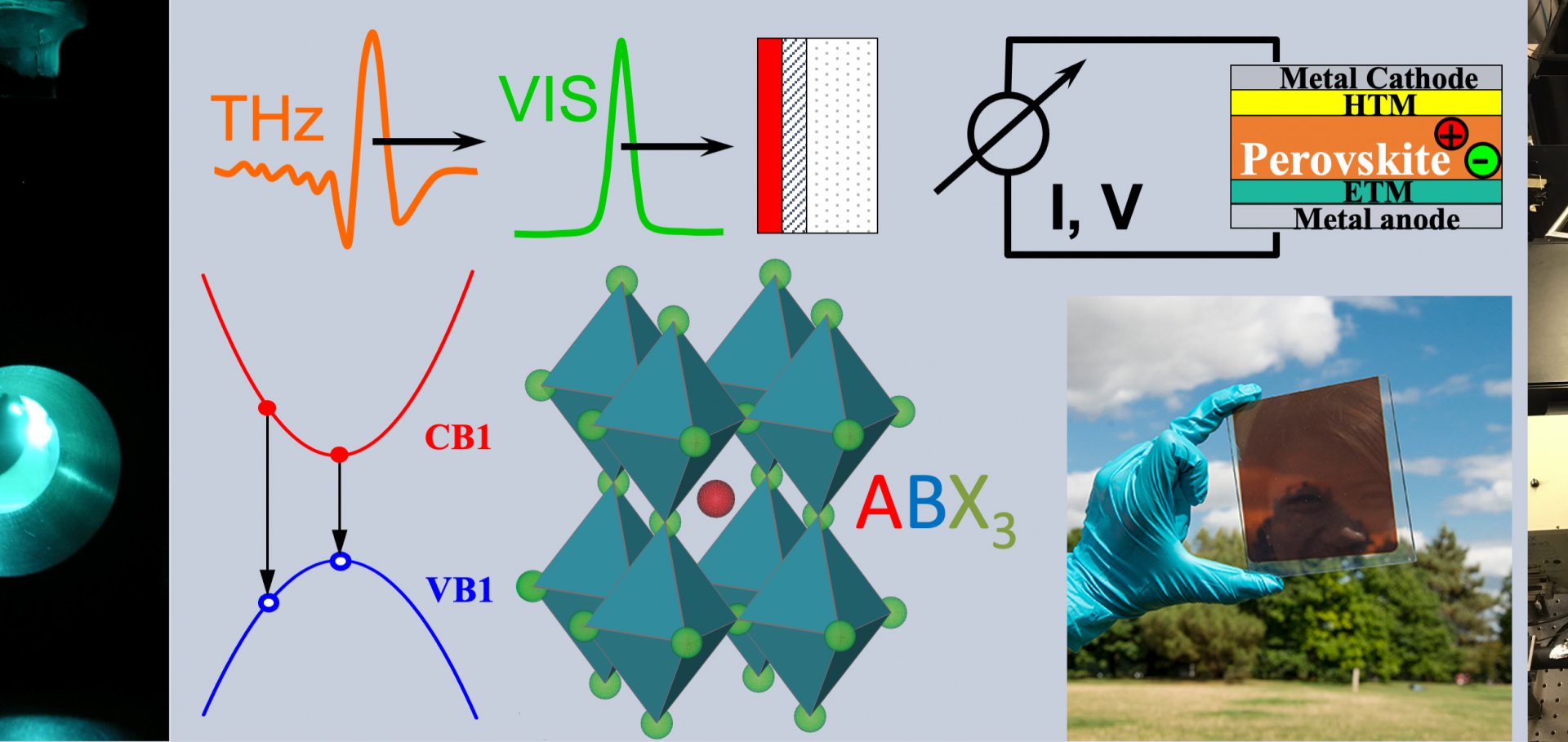Electron-hole diffusion lengths exceeding 1 micrometer in an organometal trihalide perovskite absorber.
Science 342:6156 (2013) 341-344
Abstract:
Organic-inorganic perovskites have shown promise as high-performance absorbers in solar cells, first as a coating on a mesoporous metal oxide scaffold and more recently as a solid layer in planar heterojunction architectures. Here, we report transient absorption and photoluminescence-quenching measurements to determine the electron-hole diffusion lengths, diffusion constants, and lifetimes in mixed halide (CH3NH3PbI(3-x)Cl(x)) and triiodide (CH3NH3PbI3) perovskite absorbers. We found that the diffusion lengths are greater than 1 micrometer in the mixed halide perovskite, which is an order of magnitude greater than the absorption depth. In contrast, the triiodide absorber has electron-hole diffusion lengths of ~100 nanometers. These results justify the high efficiency of planar heterojunction perovskite solar cells and identify a critical parameter to optimize for future perovskite absorber development.Optimizing the energy offset between dye and hole-transporting material in solid-state dye-sensitized solar cells
Journal of Physical Chemistry C 117:39 (2013) 19850-19858
Abstract:
The power-conversion efficiency of solid-state dye-sensitized solar cells can be optimized by reducing the energy offset between the highest occupied molecular orbital (HOMO) levels of dye and hole-transporting material (HTM) to minimize the loss-in-potential. Here, we report a study of three novel HTMs with HOMO levels slightly above and below the one of the commonly used HTM 2,2′,7,7′- tetrakis(N,N-di-p-methoxyphenylamino)-9,9′- spirobifluorene (spiro-OMeTAD) to systematically explore this possibility. Using transient absorption spectroscopy and employing the ruthenium based dye Z907 as sensitizer, it is shown that, despite one new HTM showing a 100% hole-transfer yield, all devices based on the new HTMs performed worse than those incorporating spiro-OMeTAD. We further demonstrate that the design of the HTM has an additional impact on the electronic density of states present at the TiO2 electrode surface and hence influences not only hole- but also electron-transfer from the sensitizer. These results provide insight into the complex influence of the HTM on charge transfer and provide guidance for the molecular design of new materials. © 2013 American Chemical Society.Direct observation of charge-carrier heating at WZ-ZB InP nanowire heterojunctions.
Nano Lett 13:9 (2013) 4280-4287
Abstract:
We have investigated the dynamics of hot charge carriers in InP nanowire ensembles containing a range of densities of zinc-blende inclusions along the otherwise wurtzite nanowires. From time-dependent photoluminescence spectra, we extract the temperature of the charge carriers as a function of time after nonresonant excitation. We find that charge-carrier temperature initially decreases rapidly with time in accordance with efficient heat transfer to lattice vibrations. However, cooling rates are subsequently slowed and are significantly lower for nanowires containing a higher density of stacking faults. We conclude that the transfer of charges across the type II interface is followed by release of additional energy to the lattice, which raises the phonon bath temperature above equilibrium and impedes the carrier cooling occurring through interaction with such phonons. These results demonstrate that type II heterointerfaces in semiconductor nanowires can sustain a hot charge-carrier distribution over an extended time period. In photovoltaic applications, such heterointerfaces may hence both reduce recombination rates and limit energy losses by allowing hot-carrier harvesting.Fast Electron Trapping in Anodized TiO2 Nanotubes
Institute of Electrical and Electronics Engineers (IEEE) (2013) 1-1
Probing the critical electronic properties of III—V nanowires using optical pump-terahertz probe spectroscopy
Institute of Electrical and Electronics Engineers (IEEE) (2013) 1-2


